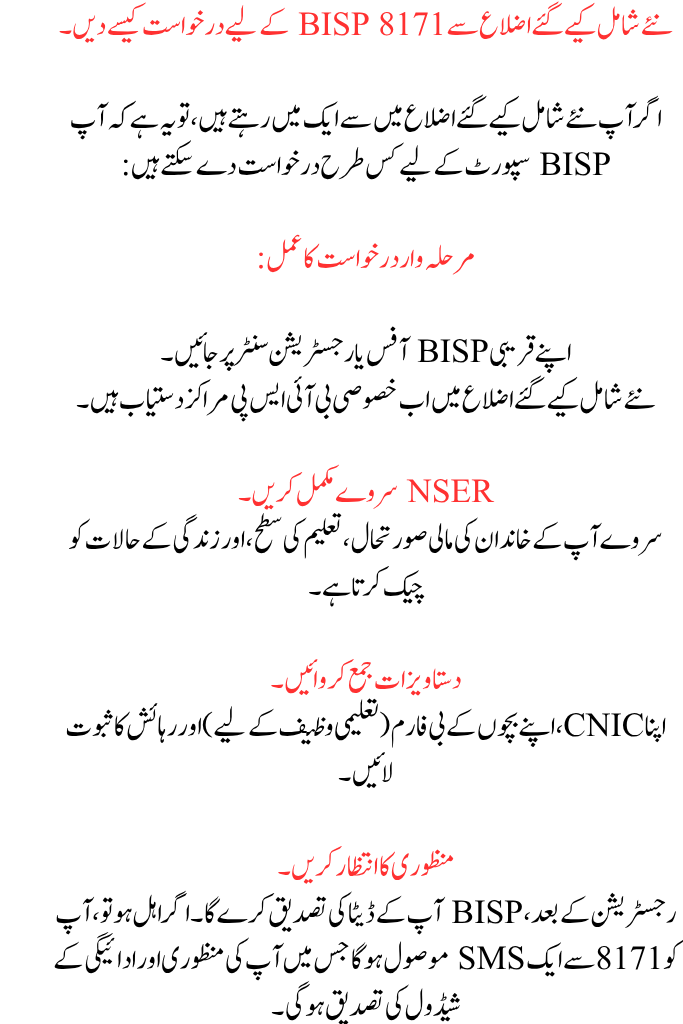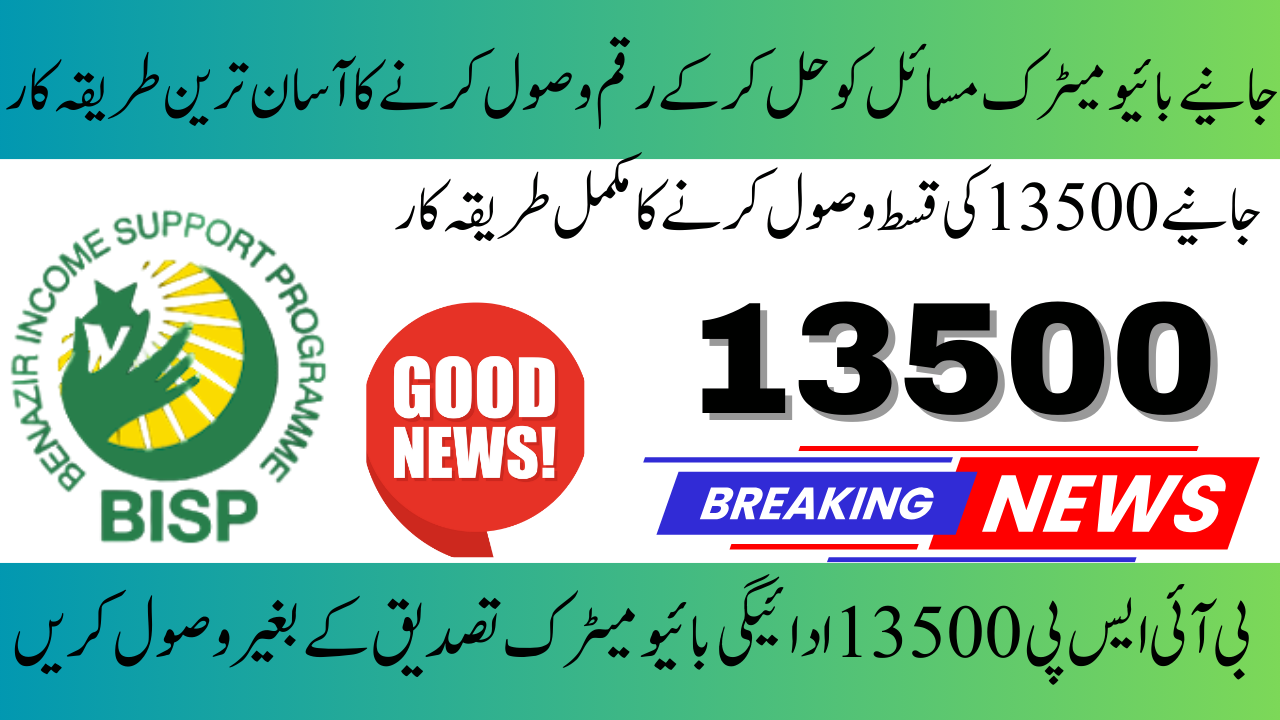The Benazir Income Support Programme (BISP 8171) continues to grow, helping more families across Pakistan with financial support. In September 2025, the government expanded the BISP program by including new districts in different provinces. This expansion aims to support poor and deserving families who were previously left out due to regional or administrative reasons.
In this article, we explain which new districts have been added, the updated eligibility criteria, how people in these areas can apply, and how to check their application or payment status through the 8171 system.
New Districts Added in BISP 8171 – September 2025
The government has included several new districts in the BISP 8171 program for the September 2025 installment. These areas were selected based on need, poverty level, and recommendations from local authorities.
List of Newly Added Districts:
Tharparkar (Sindh)
Kohistan Upper and Lower (Khyber Pakhtunkhwa)
Barkhan (Balochistan)
Skardu and Shigar (Gilgit-Baltistan)
Bhakkar and Layyah (Punjab)
Neelum and Hattian Bala (Azad Jammu and Kashmir)
Residents of these districts are now eligible to register for the BISP 8171 program and participate in the National Socio-Economic Registry (NSER) survey. Once registered and approved, they can receive both Benazir Kafalat payments and Taleemi Wazaif (education stipends) for their children.
Updated BISP Eligibility Criteria – September 2025
The BISP program is mainly designed for low-income families, especially women who are the heads of their households. The eligibility criteria have been updated in September 2025 to ensure that only deserving families are included.
Eligibility Conditions:
Female Head of Household – The applicant must be a woman who manages the household.
Valid CNIC—The woman must have a valid CNIC registered with NADRA.
Registered in NSER—The family must be part of the NSER database or complete a new survey (if they live in a newly added district).
Low Poverty Score—The poverty score must be below the BISP-defined threshold, based on proxy means testing.
Not Receiving Other Federal Support—The applicant should not be receiving money from other federal cash assistance programs (except education support).
Updated Records—All family information, including address and thumbprint, must be verified and up to date.
How to Apply for BISP 8171 from Newly Added Districts
If you live in one of the newly added districts, here’s how you can apply for BISP support:
Step-by-Step Application Process:
Visit Your Nearest BISP Office or Registration Center
Special BISP centers are now available in the newly added districts.Complete the NSER Survey
The survey checks your family’s financial situation, education level, and living conditions.Submit Documents
Bring your CNIC, B-forms of your children (for Taleemi Wazaif), and proof of residence.Wait for Approval
After registration, BISP will verify your data. If eligible, you’ll receive an SMS from 8171 confirming your approval and payment schedule.

How to Check BISP Eligibility and Payment Status Online
Whether you’re a new applicant or an existing beneficiary, checking your BISP status is easy:
Online Methods:
Send Your CNIC to 8171 via SMS
Type your 13-digit CNIC number and send it to 8171. You will receive a reply with your status.Use the BISP 8171 Web Portal
Visit the official 8171 web portal and enter your CNIC to check payment status and eligibility.Visit BISP Help Desk
If you face issues, visit your local BISP tehsil office for help. Staff will guide you on your application or payment queries.
Why the September 2025 Expansion is Important
This expansion is not just a change in area coverage—it is a big step toward social justice and poverty reduction in Pakistan.
Many of the newly added districts are remote, underdeveloped, and lack access to government facilities. By including them in the BISP system, the government is providing:
Equal access to social welfare.
Support for poor women and children.
A fair chance to those previously left out.
This move reflects the government’s vision of a more inclusive and balanced welfare system, covering all provinces and regions of Pakistan.
Conclusion
The BISP 8171 September 2025 expansion is a major development in Pakistan’s fight against poverty. By including more districts, updating the eligibility rules, and simplifying the application process, the government is ensuring that financial aid reaches those who need it most.
If you live in one of the newly included districts, visit your nearest BISP center, complete the NSER survey, and stay connected to the 8171 system. Make sure your information is correct and complete to avoid delays.
This is more than just a financial program—it’s a lifeline for families, helping them afford food, school fees, and medical care during tough times.
Frequently Asked Questions (FAQs)
1. Which districts were added in September 2025 under BISP 8171?
Tharparkar, Kohistan (Upper & Lower), Barkhan, Skardu, Shigar, Bhakkar, Layyah, Neelum, and Hattian Bala are now included in the BISP 8171 program.
2. Can men apply for BISP assistance?
No. BISP is designed for female heads of households. However, male family members are included in the household information during the NSER survey.
3. I live in a newly added district but already applied. What should I do?
You should visit the nearest BISP center to update your records. Your application might be reviewed again after the new expansion.
4. How long does BISP take to confirm registration?
Normally, you will receive a confirmation SMS from 8171 within 2 to 4 weeks after your data has been verified.
5. Can I receive Taleemi Wazaif for my children after BISP approval?
Yes. Once your family qualifies for the BISP Kafalat program, you can also register your school-going children for Taleemi Wazaif, provided their attendance is verified.





